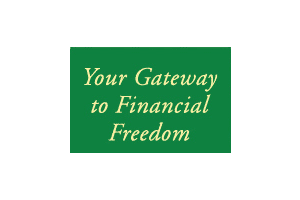Unlock Your Financial Freedom: Understanding How Federal Student Loans Are Forgiven Automatically After Years
Guide or Summary:Introduction to Federal Student Loan ForgivenessWhat Are Federal Student Loans?Eligibility for Automatic ForgivenessSteps to Ensure Your Lo……
Guide or Summary:
- Introduction to Federal Student Loan Forgiveness
- What Are Federal Student Loans?
- Eligibility for Automatic Forgiveness
- Steps to Ensure Your Loans Are Forgiven
- Conclusion: A Path to Financial Relief
Introduction to Federal Student Loan Forgiveness
Navigating the world of student loans can be overwhelming, but understanding the forgiveness options available for federal student loans can provide a pathway to financial relief. Many borrowers are unaware that federal student loans can be forgiven automatically after years of consistent payments. This article will delve into the details of federal student loan forgiveness, helping you grasp how you might qualify and the steps you need to take.
What Are Federal Student Loans?
Federal student loans are loans provided by the government to help students pay for their education. These loans typically offer lower interest rates and more flexible repayment options compared to private loans. The most common types of federal student loans include Direct Subsidized Loans, Direct Unsubsidized Loans, Direct PLUS Loans, and Direct Consolidation Loans. Understanding the type of loan you have is crucial because it affects your eligibility for forgiveness programs.
Eligibility for Automatic Forgiveness
One of the most attractive features of federal student loans is the potential for forgiveness. Under certain circumstances, federal loans can be forgiven automatically after a specified number of years of qualifying payments. The most notable programs include:
1. **Public Service Loan Forgiveness (PSLF)**: This program is designed for borrowers who work in qualifying public service jobs. After making 120 qualifying monthly payments while working full-time for a qualifying employer, borrowers can have their remaining loan balance forgiven.

2. **Income-Driven Repayment (IDR) Forgiveness**: If you enroll in an IDR plan, your monthly payments are based on your income and family size. After 20 or 25 years of qualifying payments (depending on the plan), any remaining loan balance is forgiven.
3. **Teacher Loan Forgiveness**: Teachers who work in low-income schools or educational service agencies may qualify for forgiveness of up to $17,500 on their Direct Loans after five years of service.
Steps to Ensure Your Loans Are Forgiven
To take advantage of the automatic forgiveness options, follow these steps:
1. **Stay Informed**: Regularly check for updates regarding federal student loan policies and forgiveness programs. The rules can change, and staying informed will help you take advantage of any new opportunities.

2. **Enroll in the Right Repayment Plan**: Choose a repayment plan that aligns with your financial situation. If you’re aiming for IDR forgiveness, ensure you enroll in one of the IDR plans.
3. **Make Qualifying Payments**: Keep track of your payments. Ensure that you are making qualifying payments on time and in the correct amount. This is crucial for meeting the forgiveness requirements.
4. **Document Your Employment**: For PSLF, ensure that you have the Employment Certification Form completed and submitted regularly to confirm your employment status and qualifying payments.
5. **Keep Records**: Maintain comprehensive records of your payments, employment, and any correspondence related to your loans. This documentation can be invaluable if you need to prove your eligibility for forgiveness.

Conclusion: A Path to Financial Relief
Understanding that federal student loans can be forgiven automatically after years is a powerful motivator for borrowers. By knowing your options and taking the necessary steps, you can work towards alleviating your student debt burden. Whether you’re in public service, teaching, or simply navigating your financial journey, the potential for loan forgiveness is an opportunity you shouldn’t overlook. Embrace the knowledge and take action—your financial freedom may be closer than you think!